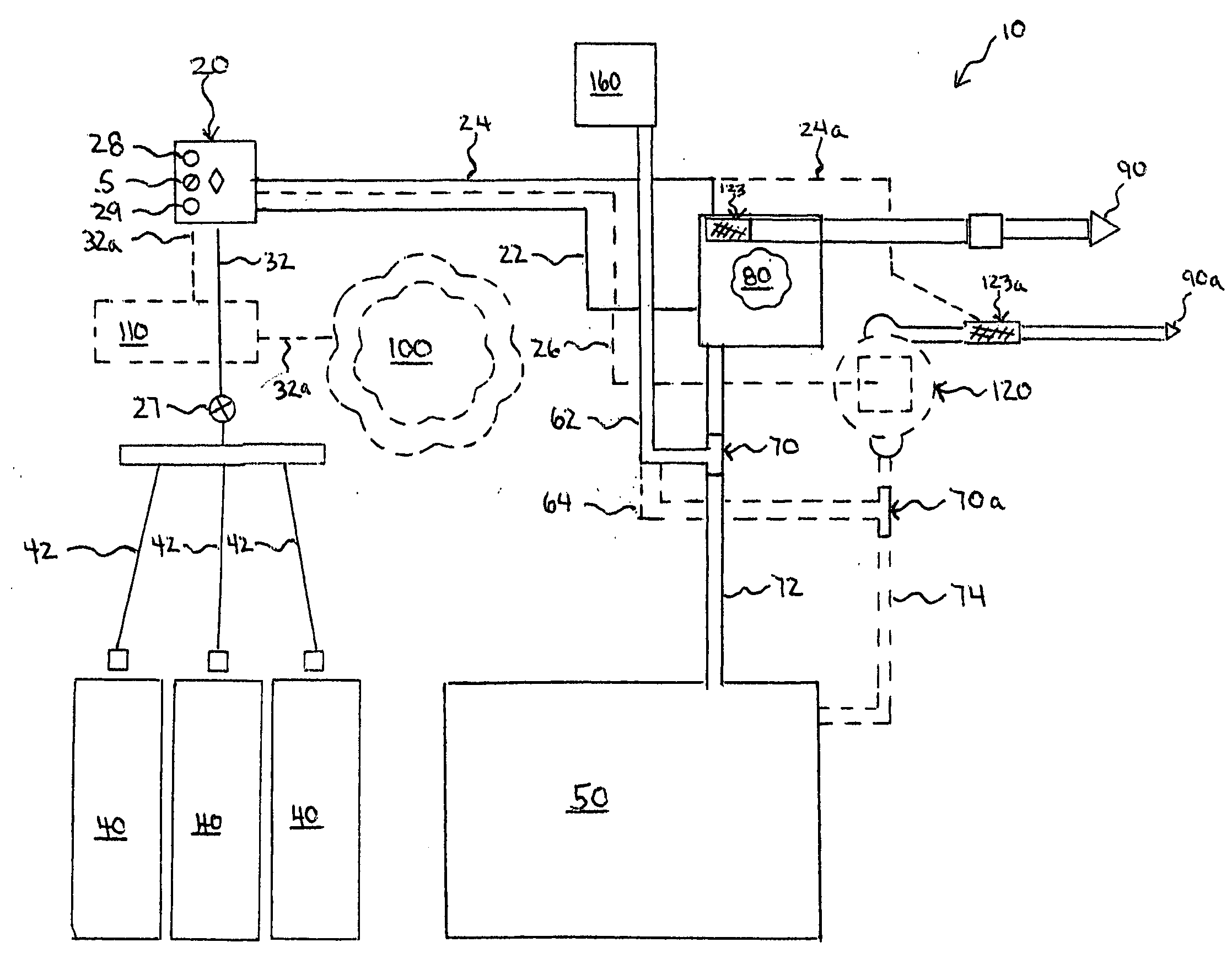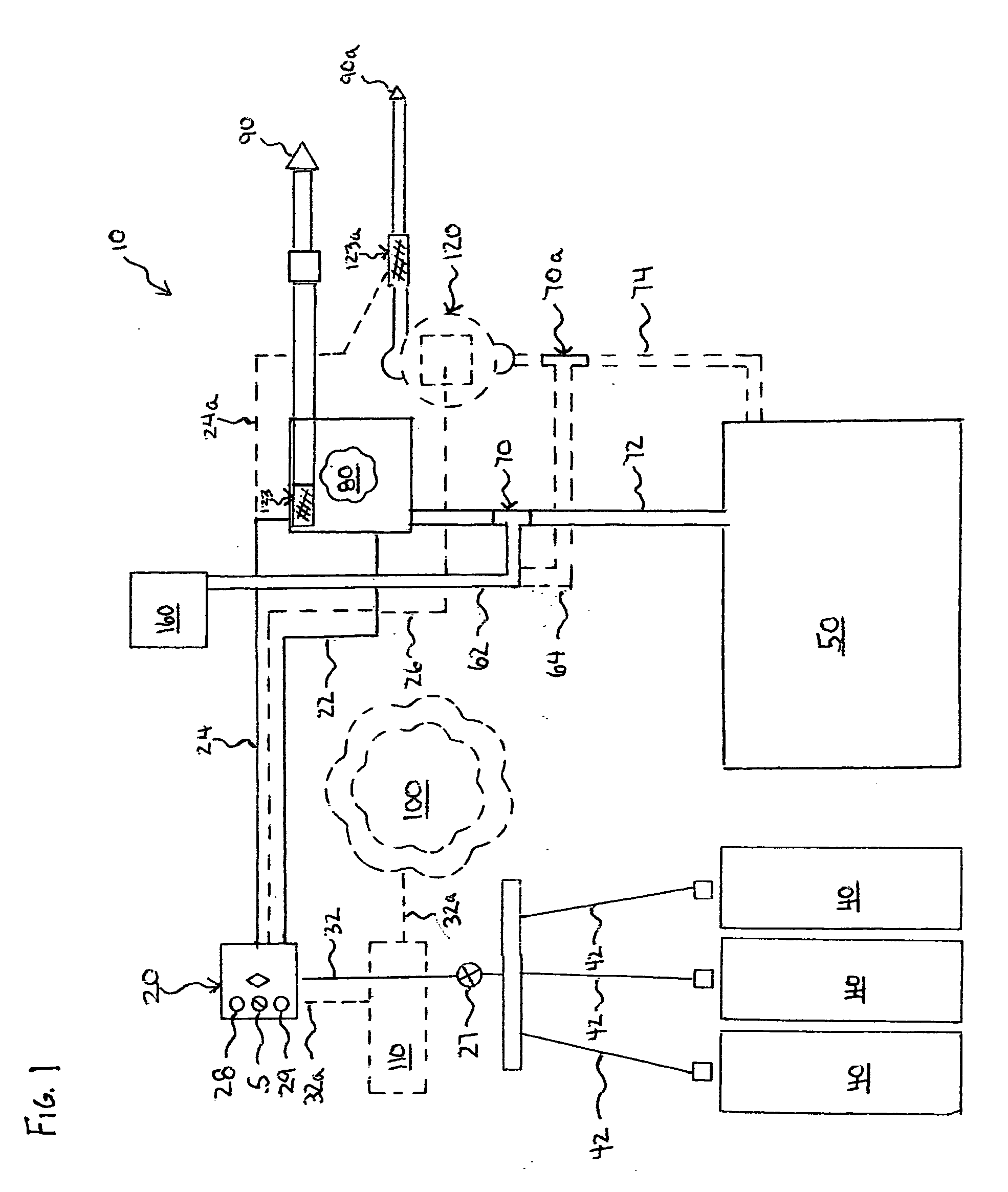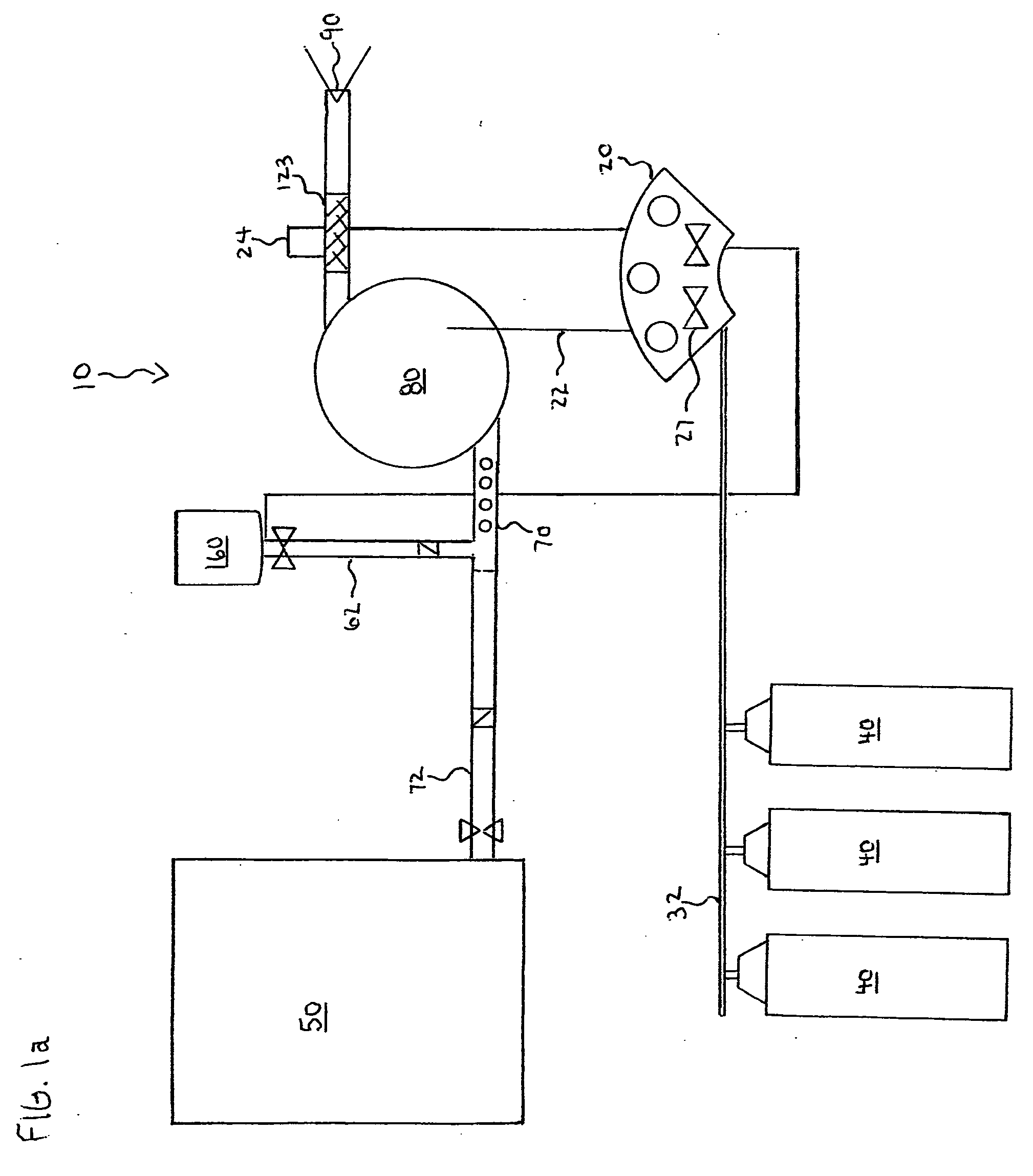Self-sustaining compressed air foam system
a compressed air foam and self-sustaining technology, applied in fire rescue and other directions, can solve the problems of 3 billion dollars in damage, difficult distinction between urban, rural and wildland fire protection responsibilities, and unprecedented magnitude of fire protection problems
- Summary
- Abstract
- Description
- Claims
- Application Information
AI Technical Summary
Benefits of technology
Problems solved by technology
Method used
Image
Examples
Embodiment Construction
[0032]In FIG. 1, the self-sustaining compressed air foam system 10 illustrates in broken-lines an alternative to the preferred embodiment for the source of stored air energy 40 and stored solar energy 100. The implementation of each of these variations is subject to selection by one skilled in the art of the available technology to create a specific implementation of the system component.
[0033]Overview: FIG. 1, the self-sustaining compressed air foam system comprises a source of stored energy 40,110 attached to a control panel 20 via energy supply lines 32,32a that attaches to a regulator 28,29 or switch S that operates a pump 80,120 and pressurized air injector / agitator 123,123a that is connected by a pipe, tube or hose 24, or wire 24a to said pump 80,120 that draws water via pipe, tube or hose 72,74 from a source of water or tank 50. A second foam concentrate container 160 intersects pipe 72,74 via a tube 62,64 at the branch of a tee 70,70a that conjoins the water line 72,74 with ...
PUM
 Login to View More
Login to View More Abstract
Description
Claims
Application Information
 Login to View More
Login to View More - R&D
- Intellectual Property
- Life Sciences
- Materials
- Tech Scout
- Unparalleled Data Quality
- Higher Quality Content
- 60% Fewer Hallucinations
Browse by: Latest US Patents, China's latest patents, Technical Efficacy Thesaurus, Application Domain, Technology Topic, Popular Technical Reports.
© 2025 PatSnap. All rights reserved.Legal|Privacy policy|Modern Slavery Act Transparency Statement|Sitemap|About US| Contact US: help@patsnap.com



